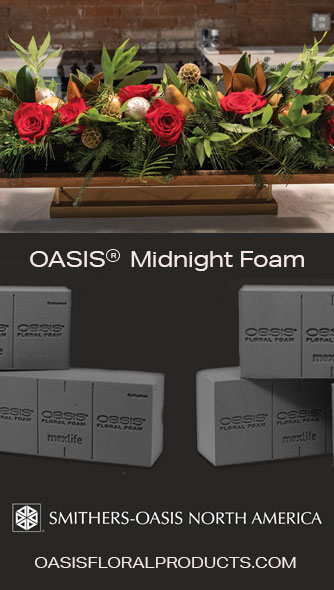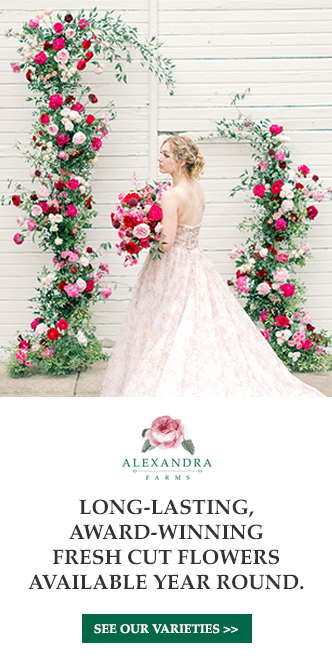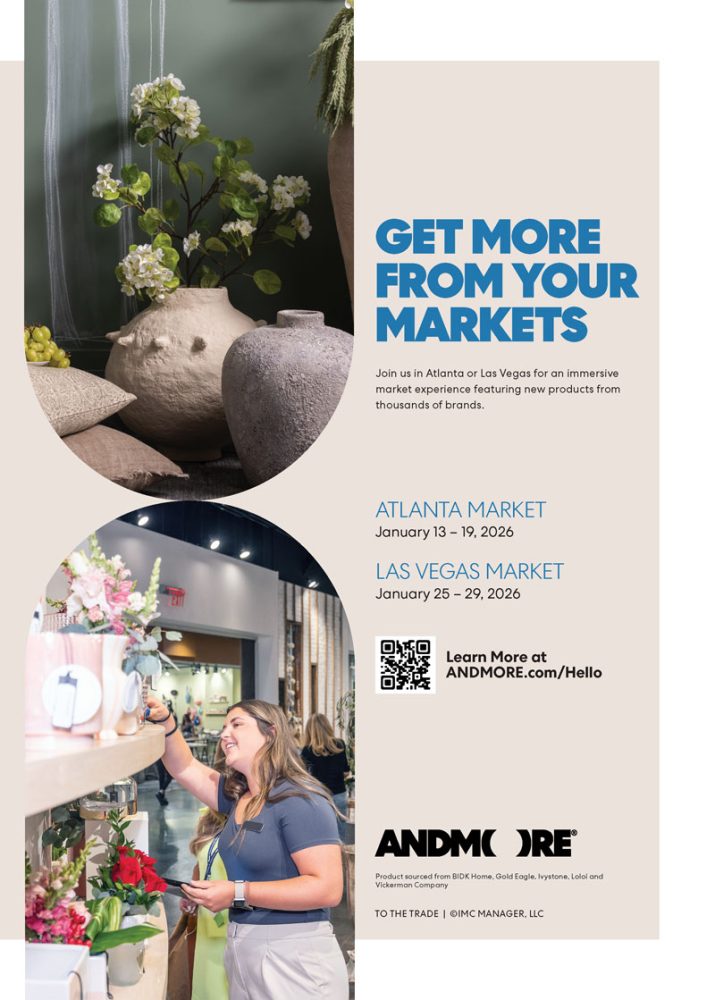By Jill Brooke
Every spring, something magical happens inside America’s great museums. Rooms that usually hum with the quiet reverence of hushed voices and still paintings burst into riotous life, buzzing with activity and exuberance. Tulips bend toward Renoirs. Roses echo the pinks in a Rubens. Calla lilies sweep upward to mirror the curves of a Calder sculpture.
Aptly called “Art in Bloom”—the name most museums have adopted for these floral fundraiser extravaganzas—these events invite florists to interpret works of art in their permanent collections. The results are far more than colorful dialogues between living blooms and static canvases. They are conversations between fragrance and form, between local talent and world masterpieces, between the fleeting and the eternal.
Beneath the beauty lies something just as vital: these shows have become some of the most successful fundraisers in the museum world, raising millions for programming, outreach and acquisitions. For museums that face the perennial challenge of persuading people to revisit works they may already have seen, flowers are the refresh button. They bring fragrance, texture and color into gallery spaces, making visitors linger longer. They also break perceived barriers—museums can feel “quiet” or even austere—and flowers create a welcoming, joyful environment that is literally “alive.”
“These are some of our biggest and most popular fundraisers,” says Laura Finan, director of special initiatives at the North Carolina Museum of Art, which has been doing Art in Bloom events for 12 years. “The public now looks forward to it as an annual tradition. Mothers and daughters come, friends and families. The whole community enjoys it.”
The North Carolina event doesn’t even limit participants to professionals—though the larger installations are given to established designers. For 2026, the museum received 450 requests in six minutes for just 40 spots. Their policy is to take the first 40, with wiggle room in case someone drops out.

Why Florists Love Them
For florists, the appeal is obvious. Unlike large-scale exhibitions, such as Fleurs de Villes or the Philadelphia Flower Show—which require weeks of labor, extensive travel and often personal financial sacrifice—Art in Bloom events are usually in their own cities, easier to stage and far less costly.
Yes, florists often absorb some expenses—since token floral design budgets rarely cover the full cost of creativity—but the time commitment is manageable. Instead of giving up a full week of paid work, a florist may only dedicate a few hours to creating an arrangement. Plus, there are no travel costs either. And the payoff is immense.
“Art in Bloom DC has become my favorite event to produce,” says floral designer Margo Fischer, renowned for her wedding and event work. “It invites so much creativity, and I love getting to work with such inspiring designers in one space.”
The camaraderie is part of the magic. Designers swap ideas, meet potential collaborators and show their work to audiences who might hire them later for weddings or parties. For many florists, the exposure is invaluable: their work sits next to masterpieces, gets photographed by thousands, is shared on social media and often gets published in local press. Museums also welcome florists to reach out and offer their talents. It is a symbiotic relationship.

Why Museums Need Them
For the public, Art in Bloom gives the museums’ works a reboot.
Another benefit to these events is that the floral interpretation does not compete with the artwork—it offers a new lens through which to view it. Visitors find themselves looking back and forth, comparing how an orchid cascade might mimic the folds of a gown in a portrait, or how a sculptural arrangement of branches can capture the severity of a cubist composition.
Furthermore, the tickets are sold with the urgency of a Broadway preview. Flowers only last a few days, and the event is usually from Thursday to Sunday or in some cases a full week with programming around it. Patrons who would never line up for an exhibition of medieval armor happily wait for an Art in Bloom ticket. Museums have noticed—and they’ve leaned into the formula. Tickets, preview parties, workshops, auctions of flower arrangements, sponsorships, merchandise and food/beverage events each add revenue layers as well.
For the public, this pairing becomes a multi-sensory playground. Any time you have hundreds of flowers in one setting it elevates the experience.
The newest arrival to the concept is Newfields, which launched Art in Bloom in its galleries at the Indianapolis Museum of Art (IMA). Jonathan Wright, Ruth Lily Director of the Garden and Fairbanks Park at Newfields, spearheaded the idea and expanded on it. “We are thrilled that Art in Bloom has grown over the years. It is the perfect embodiment of our mission, and we are honored to highlight the work of dozens of extraordinary floral artists, alongside the icons from the IMA collection,” he says. “We are looking forward to what our artists will dream up for next year’s edition.”
Unlike the older East Coast and West Coast stalwarts, this is a fresh experiment, one that shows how the formula continues to spread. Newfields already has a reputation for its gardens and horticultural programming, making the marriage of art and floral interpretation feel especially natural. For Indiana, this event signals a new chapter in museum fundraising: flowers to build community, draw younger audiences and connect the indoors with the outdoors.
Who gets the credit for starting Art in Bloom? If there is one place that deserves credit for popularizing the format, it’s the Museum of Fine Arts, Boston. Its Art in Bloom has been dazzling visitors for more than 40 years, pairing works from the MFA’s renowned collection with floral interpretations from professional designers and garden clubs.

Budding Opportunities
Overall, for florists, this is an easy branding opportunity—one that’s not only fun but potentially profitable as well. It allows the florist to flex their creative muscles in fresh ways; most museums allow them to choose which work of art they want to reimagine. The florist can echo a Dutch still life, reimagine a Picasso or even mirror the swoop of a modern building.
Matched together with the art, the flower arrangements are eye-popping, smile-inducing and inspiring pieces that are prototypes of what people can also do in their own homes. Yet another marketing angle. After all, why buy a piece of art and not have a matching flower arrangement to accompany it?
In the end, Art in Bloom doesn’t just elevate museums—it elevates florists, proving their creations deserve a place alongside the world’s greatest masterpieces or home art.
Some Shows Worth Checking Out
The Gold Standard: Bouquets to Art in San Francisco
The Fine Arts Museums of San Francisco—comprising the de Young and the Legion of Honor—can rightfully claim one of the crown jewels of this movement. Since the mid-1980s, their Bouquets to Art exhibition has invited more than 100 designers each year to reinterpret pieces in their collection. It has grown into one of the museum’s signature annual events.
The numbers tell the story: Bouquets to Art has raised more than $7 million for the museums since its inception, in turn funding exhibitions, acquisitions and educational programs. Preview parties sell out and Instagram lights up with images of floral installations echoing famous artworks. For San Francisco society, it’s as much a fixture as the opera opening or the symphony gala.
What makes it work? The blend of prestige (nationally known floral designers are often invited), community (local garden clubs participate) and the irresistible drama of live, short-lived art.
Minneapolis: Art in Bloom as Civic Ritual
If San Francisco has glamour, Minneapolis has scale. The Minneapolis Institute of Art (Mia) has hosted Art in Bloom for 42 years and counting, drawing nearly 100,000 visitors annually. The event showcases more than 100 floral arrangements paired with artworks throughout the museum’s collection.
What’s distinctive is Mia’s decision to keep the event itself free to the public. Instead, fundraising flows through sponsorships, memberships, a high-end preview gala called “Party in Bloom,” and companion events like lectures and hands-on workshops. By lowering the barrier to entry, Mia turns Art in Bloom into a civic ritual: a harbinger of spring in Minnesota, when locals are desperate for color after months of snow.
The scale makes it one of the most influential of all floral fundraisers in America, proving that accessibility and fundraising can go hand in hand.
The Southern Blossoms: Orlando
Orlando’s version takes a slightly different tack, blending flowers with antiques and “Tables in Bloom,” where designers create fantastical dining displays. Organized by the Council of 101, a powerhouse volunteer group that supports the Orlando Museum of Art, Orlando’s Art in Bloom consists of three days of lectures, marketplace vendors, and masterclasses in addition to floral interpretations. The layers of activity diversify revenue streams and ensure wide community buy-in.
Oklahoma City: Flowers as Lifeblood
The Oklahoma City Museum of Art is refreshingly blunt: their Art in Bloom is “one of our most important fundraisers of the year.” The event lasts only a weekend, but it supports everything from school tours to art supplies. Local florists are given gallery space to interpret works, and the city turns out. It’s an excellent example of how even mid-sized museums in less populous cities can use the formula to generate vital operating support.
Cincinnati and Springfield: The Midwest Flourishes
Cincinnati Art Museum hosts a biannual Art in Bloom that transforms the galleries with more than 60 floral installations. The event dovetails with lectures and performances, pulling in a broader audience.
Springfield Art Museum in Missouri has added its own twist: combining flowers with fashion. Designers create garments and floral works that riff on each other, making for a spectacle that feels like runway show meets botanical conservatory. This cross-disciplinary approach expands the donor pool and draws lifestyle sponsors who might not otherwise support a museum.
San Diego: The Signature “Art Alive”
On the West Coast, San Diego Museum of Art has branded its floral fundraiser not as Art in Bloom but as Art Alive. The name captures the energy of the event, which has become the museum’s signature fundraiser each spring. More than 80 floral designers participate, and in 2025 the event has expanded to include interpretations of the museum’s architecture itself.
Art Alive exemplifies how these fundraisers evolve to stay fresh. Rather than risk “same-old fatigue,” San Diego continues to innovate, keeping sponsors and visitors engaged year after year.
Hartford: The Wadsworth Atheneum’s Fine Art & Flowers
In Hartford, Connecticut, the Wadsworth Atheneum—the oldest continuously operating public art museum in the United States—hosts Fine Art & Flowers. Now in its fourth decade, it pairs local designers with the museum’s masterpieces. Like San Francisco’s Bouquets to Art, it benefits from longevity: an event that becomes tradition gains layers of meaning, nostalgia and donor loyalty. For the Wadsworth, it’s both a fundraiser and a reaffirmation of its place in the cultural fabric of New England.























